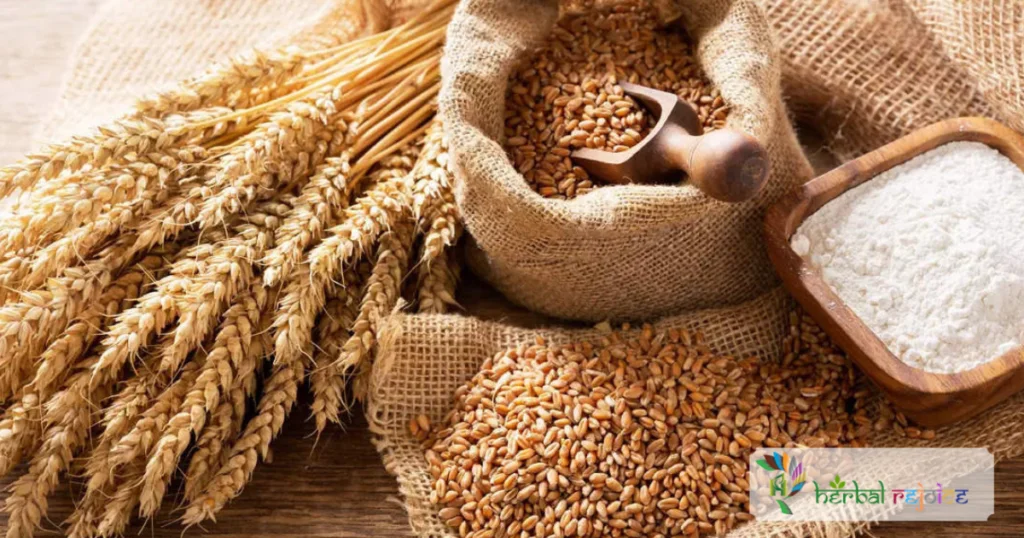Introduction
Wheat (Triticum aestivum), also known as Godhuuma in Ayurveda and Gehun in folklore, is a cultivated food crop primarily grown in regions such as Punjab, Haryana, Uttar Pradesh, Madhya Pradesh, Maharashtra, Bihar, and Rajasthan.
Wheat, also known as Godhuma in Ayurveda which is a major source of starch and energy. It also provides substantial components such as vitamins, protein etc..
Names and Habitat Of Wheat
The many species of wheat together make up the genus Triticum /ˈtrɪtɪkəm/; the most widely grown is common wheat (T. aestivum).
Typical habitats of such plants include fields, roadsides, areas along railroads, areas near grain elevators, and open waste areas.
Sometimes Wheat is deliberately planted as a source of food for wildlife and to control erosion along roadside embankments until perennial grasses become established.
Chemical Constituents In Wheat
Wheat germ oil, derived from wheat germ, is a rich source of tocopherols (vitamin E).
It contains approximately 1897 mcg/g of total tocopherols, with alpha-tocopherol constituting about 67% of the total.
Additionally, wheat germ has been found to contain ergosterol, a provitamin D.
Key Components Of Wheat
Apart from its tocopherol content, wheat germ is valued for its mineral, protein, and lipid contents.
The proteins found in wheat germ are abundant in lysine, with a range of 5.28-5.55 g/100 g of protein.
These proteins have a high biological value of 94% and a protein efficiency ratio of 2.9. Wheat germ also contains haemagglutinating and antipyretic factors, but these are destroyed when the wheat germ is toasted.
It further contains haemoproteins with peroxidase activity.

Traditional Health Benefits Of Wheat
In animal studies, the addition of wheat germ (7%) to a high-fat (cholesterol) diet resulted in a significant decrease in VLDL-cholesterol and VLDL-triglycerides, while increasing the levels of HDL-cholesterol after 7 weeks of feeding.
Bran oil derived from wheat contains tocopherols, with the majority of them (68%) being in the epsilon form, while only 11% constitutes alpha-tocopherol.
Lipids associated with gluten, present in wheat, contain a high percentage of linoleic acid, and experiments have shown a potential decrease in serum cholesterol levels when consuming gluten lipids.
It is important to note that gluten sensitivity has been reported, even when using whole wheat flour.
Conclusion
In conclusion, Wheat (Triticum aestivum) is a highly nutritious crop with various health benefits.
Its rich vitamin E content, minerals, proteins, and lipids make it a valuable addition to the diet.
However, individuals with gluten sensitivity must exercise caution when consuming wheat products. Incorporating wheat and its byproducts, such as wheat germ oil, into a balanced diet can contribute to overall health and wellness.


